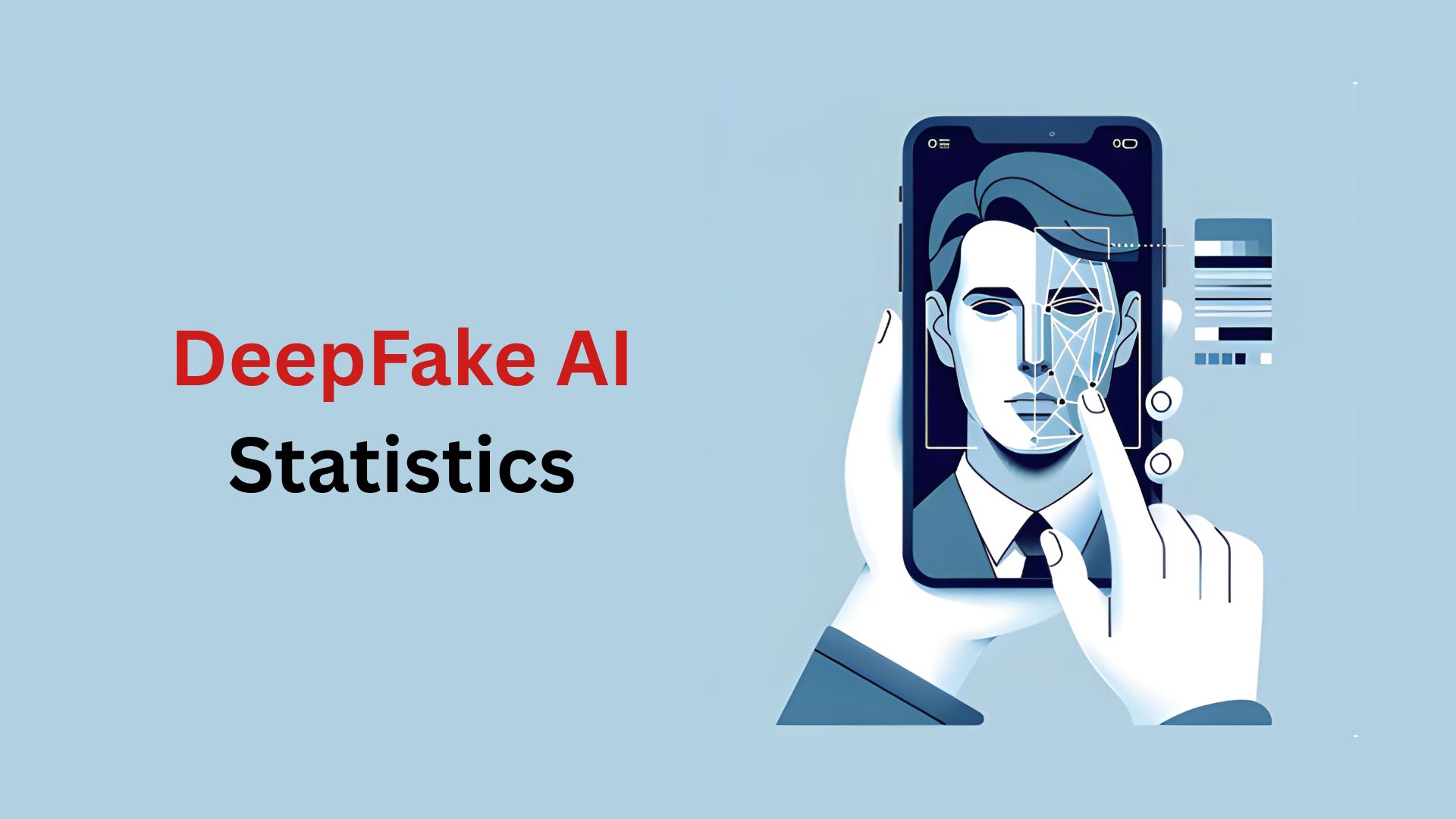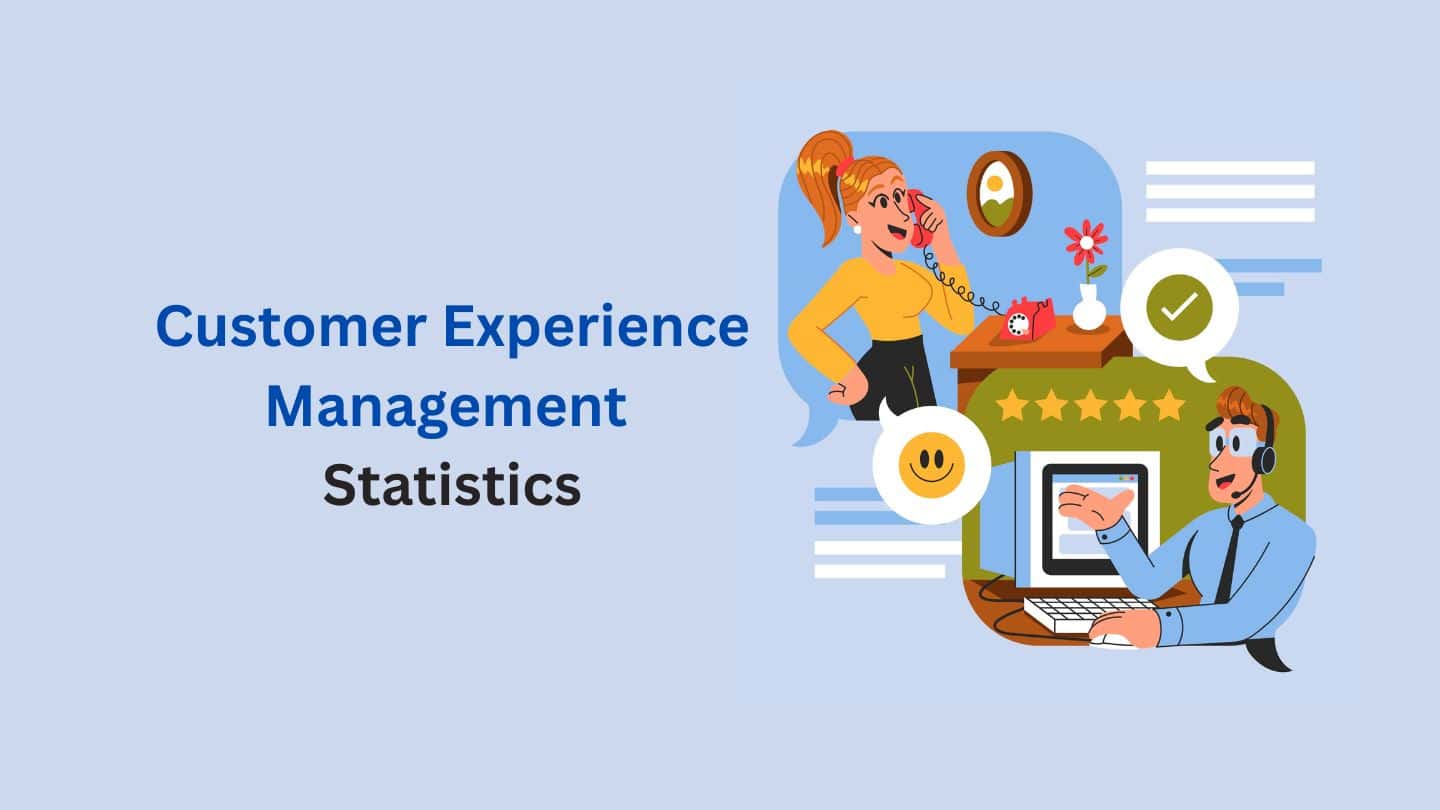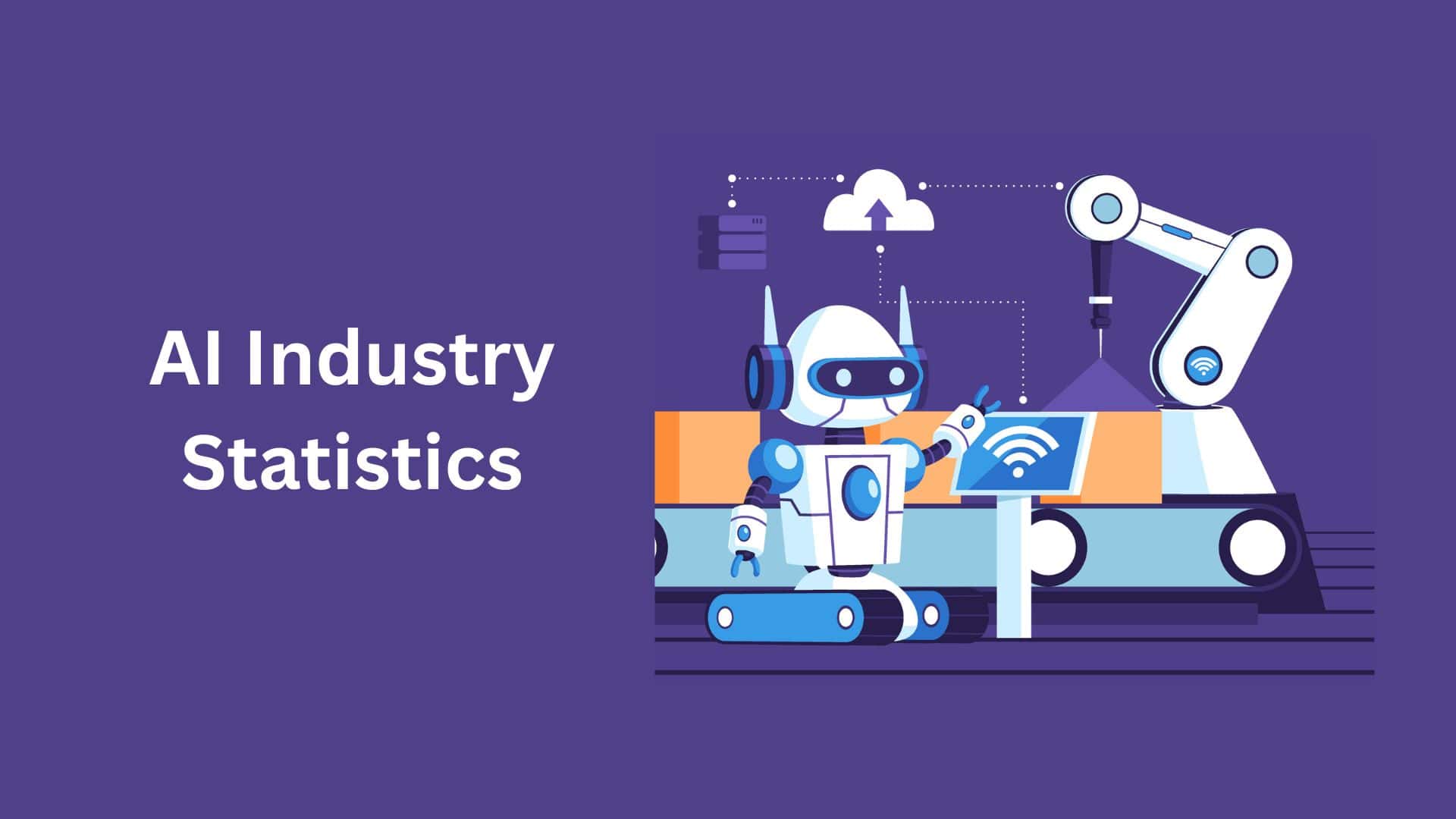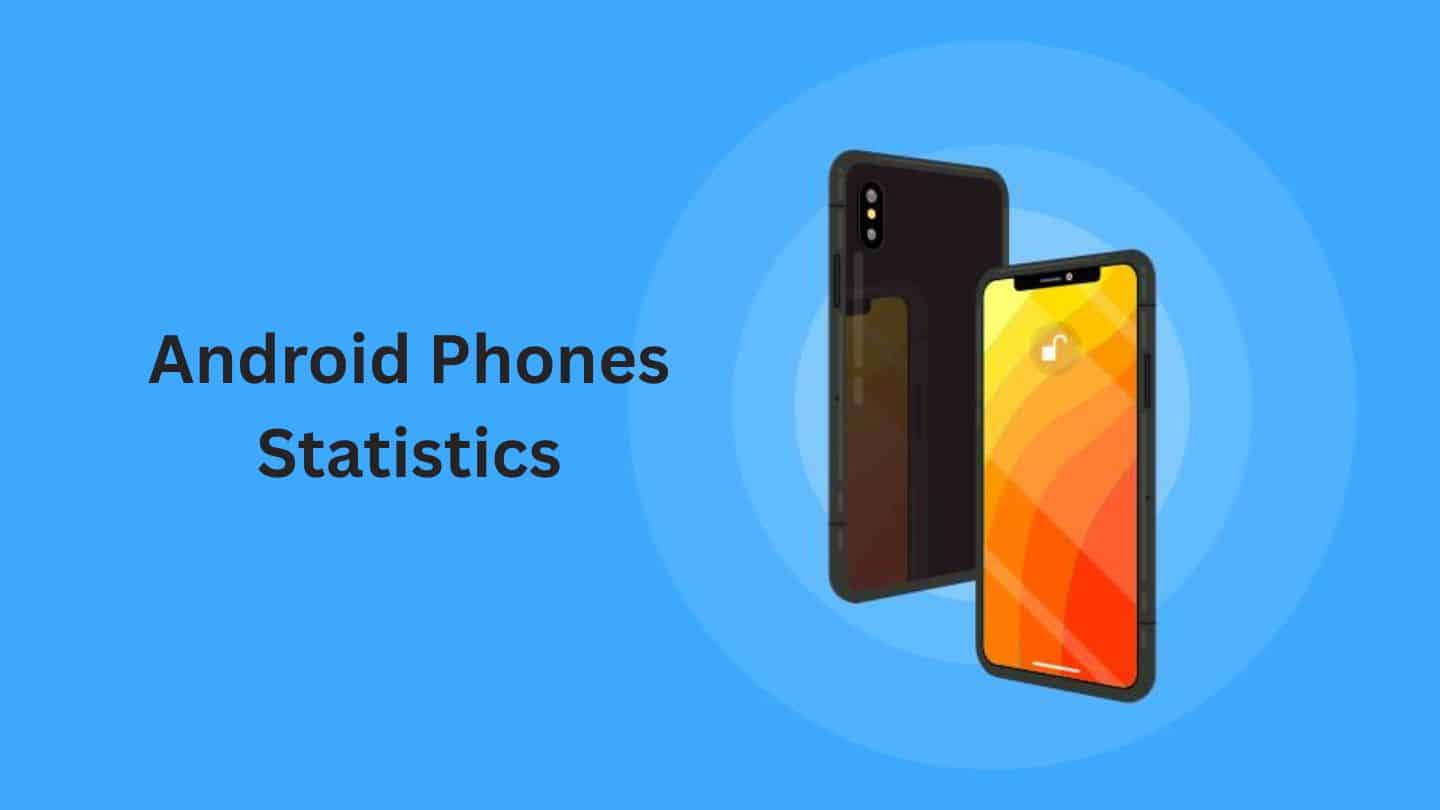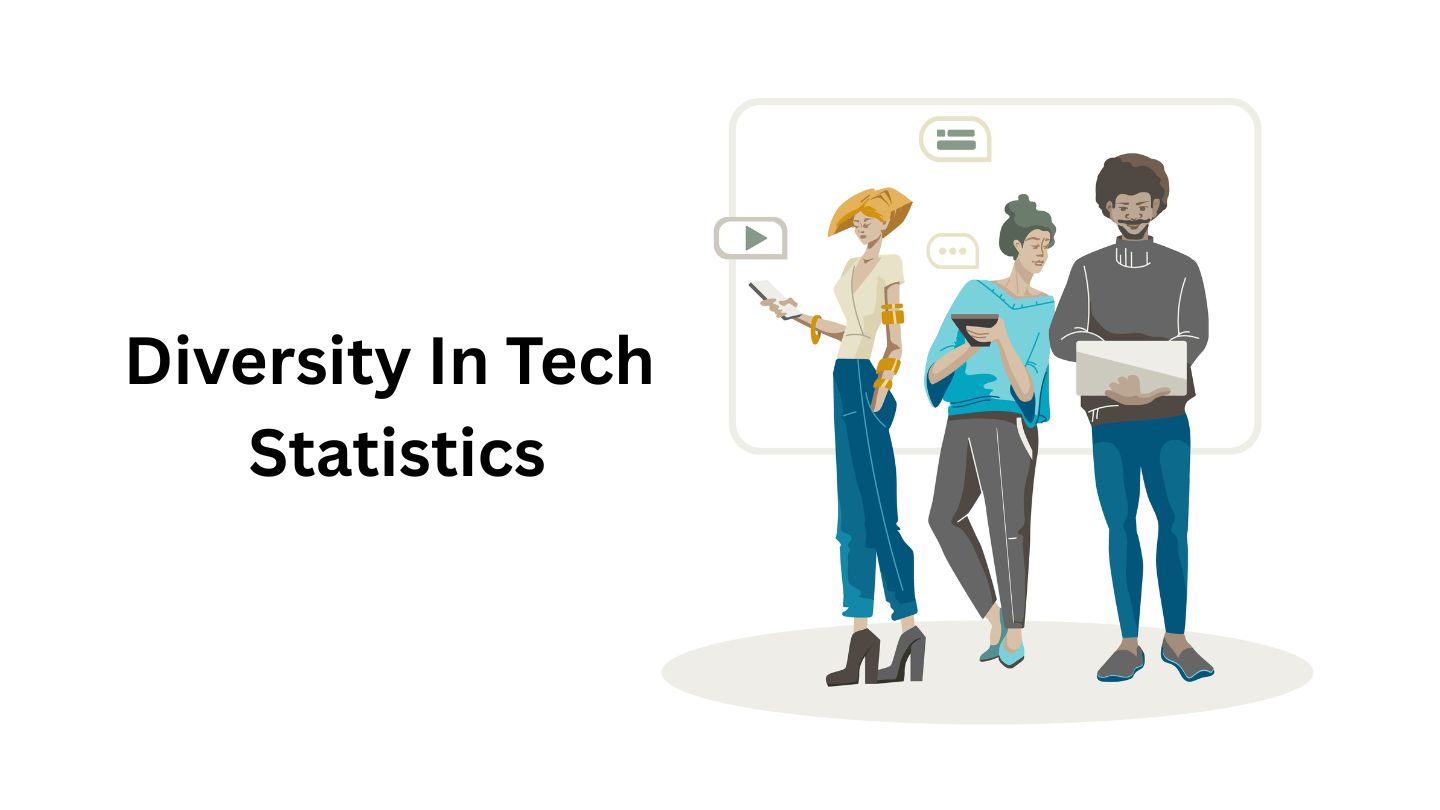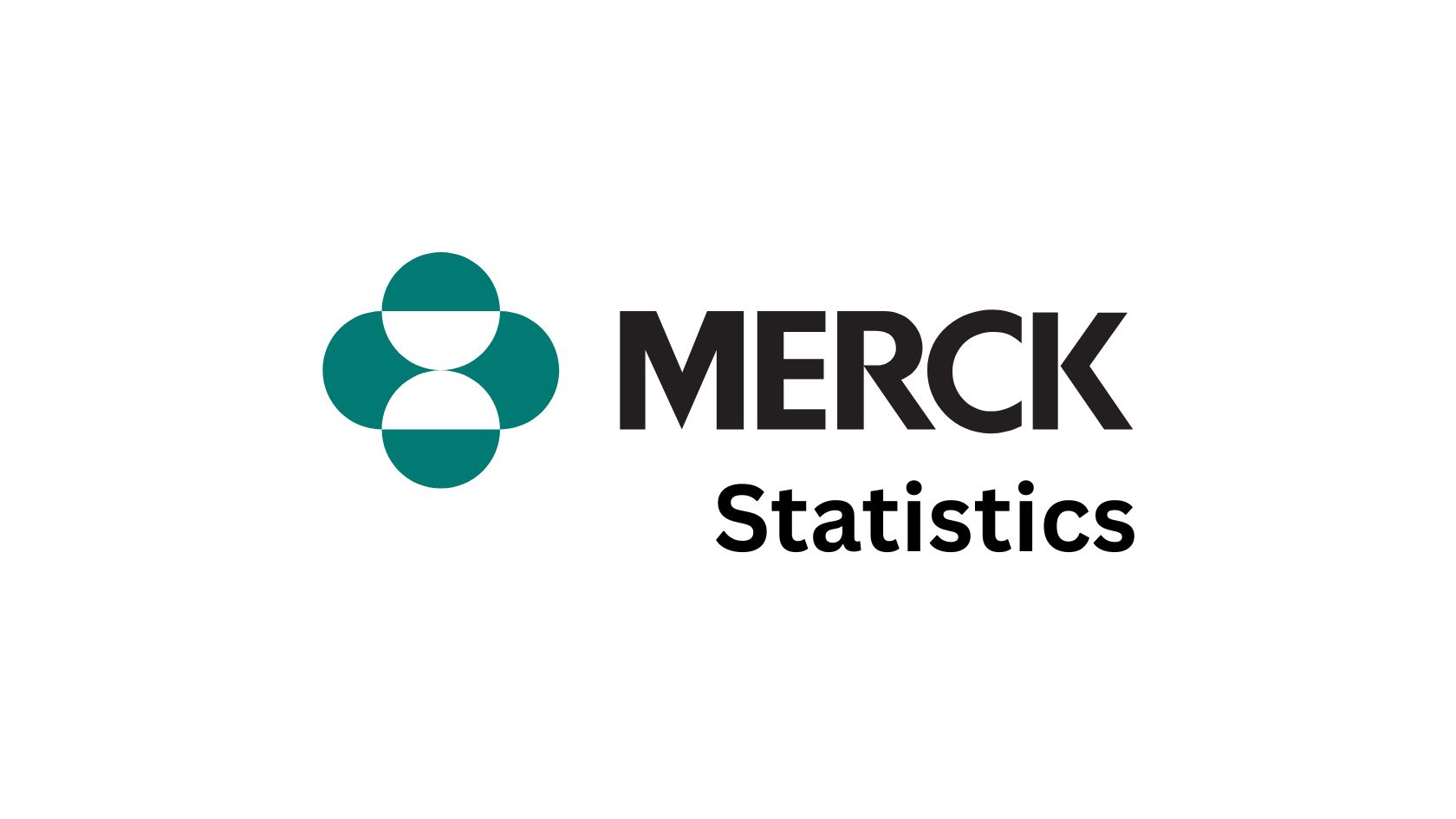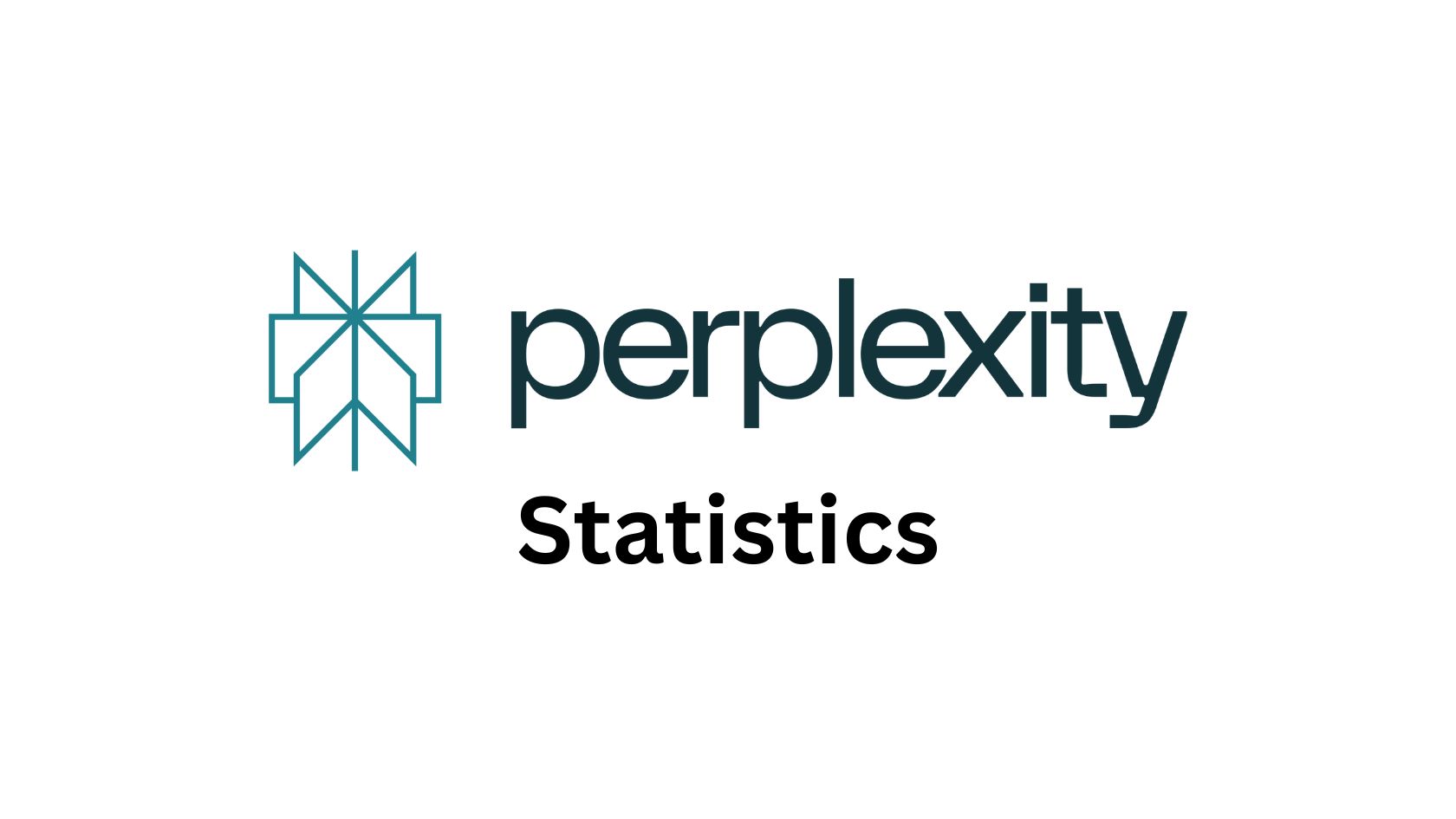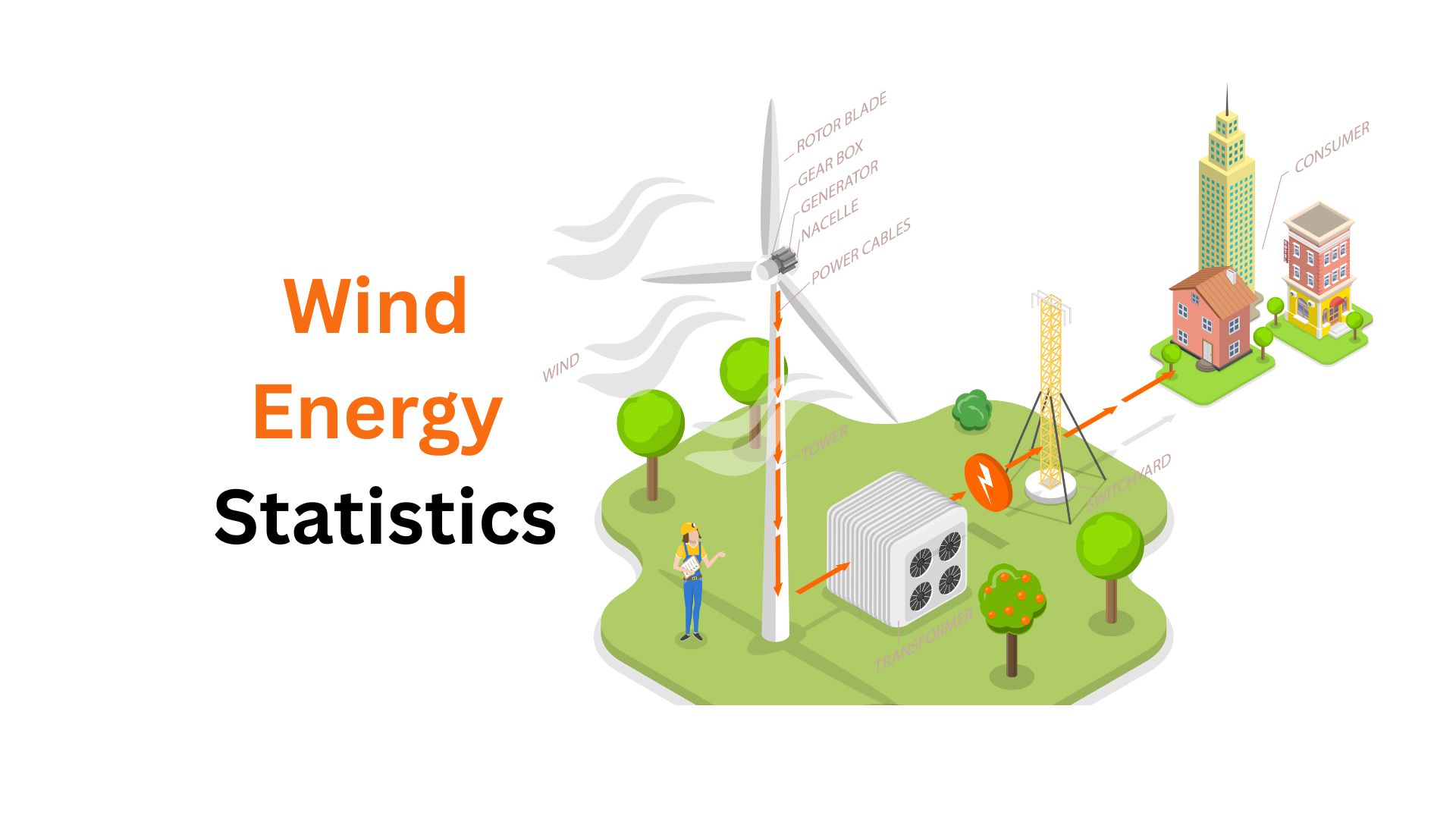Internet of Things Statistics By Usage, Market Size and Facts (2025)

Updated · Sep 25, 2025

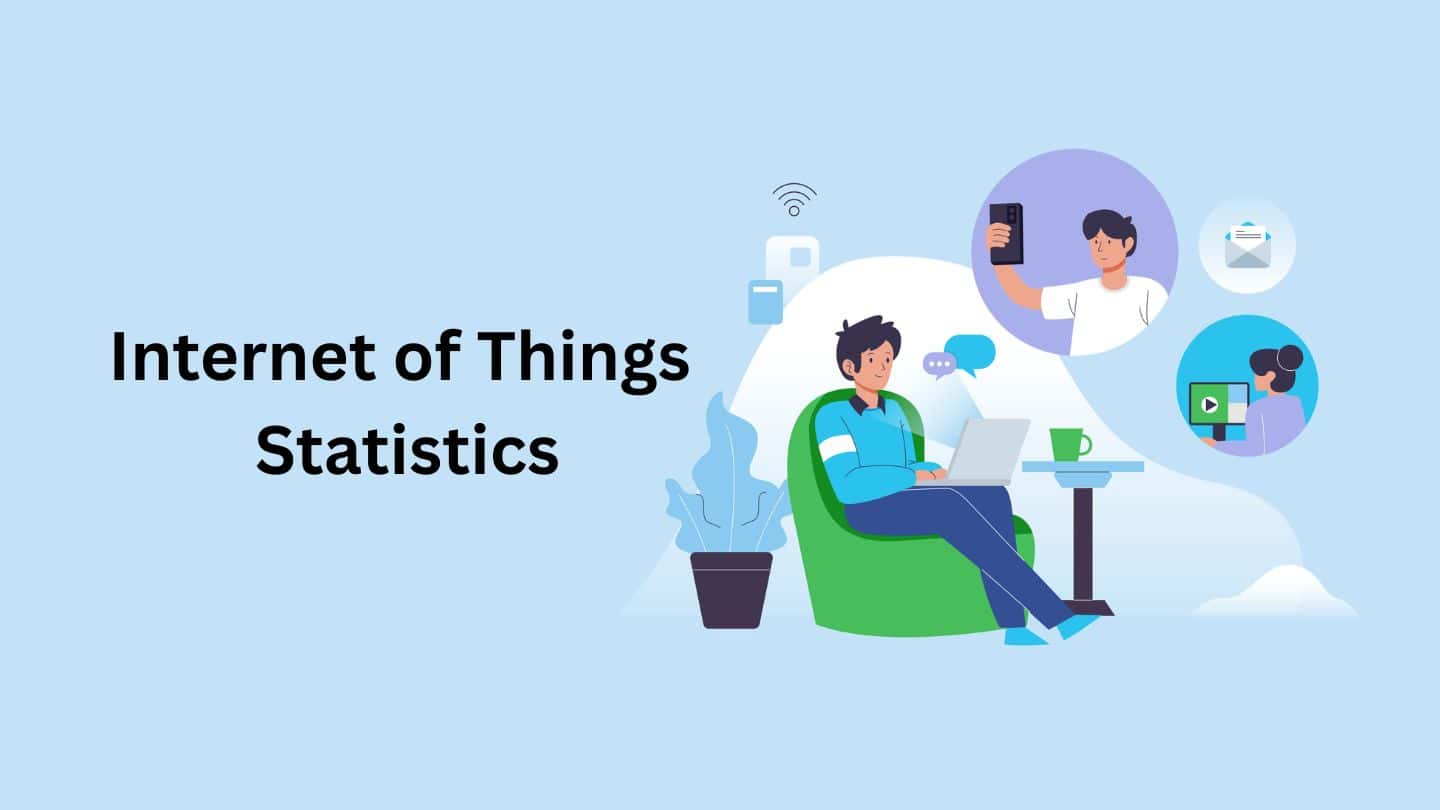
WHAT WE HAVE ON THIS PAGE
Introduction
Internet of Things Statistics: To put it in simple terms, IoT is a vast network of physical things that are programmed with sensors, software, and other technologies to collect and share data over a network without human intervention.
These things can be anything from appliances and wearables to industrial tools and agricultural instruments, allowing them to connect, communicate, and automate processes in up-to-date processing.
It is also an economic activity, with a value that continues to grow, as the sector’s growth is driven by massive investments and widespread adoption across both consumer and industrial applications. So I would like to discuss more about these IoT statistics in a Thai article, examining the data, its scale, and the key players driving its expansion. Let’s get into it.
Editor’s Choice
- The global Internet of Things market size is expected to reach approximately $1.1 trillion by 2025.
- $2.5 billion was the estimated market value for the global industrial Internet of Things platform market in 2022.
- The market for smart cities, a major application of the IoT, is projected to be worth around $1.5 trillion by 2034.
- Annual spending on IoT technology is expected to exceed $1.3 trillion by the end of 2025.
- Healthcare, or IoMT, is forecasted to grow at a compound annual growth rate (CAGR) of 21.5% from 2023 to 2030.
- By 2028, the market for connected cars is expected to reach a value of over $190 billion.
- Global spending is anticipated to grow by 2% annually, reaching over $1.1 trillion in 2023.
- The market devices in agriculture are expected to reach $20.4 billion by 2027.
- A total of $74.5 billion was invested in the smart home IoT market in 2022.
- The global market in retail is projected to reach over $50 billion by 2026.
- About 82% of companies that have implemented an IoT strategy have seen a positive return on investment within two years.
- By the end of 2025, it’s predicted that 46% of all data in the industrial sector will be generated by IoT devices.
- The market for IoT in the logistics and transportation sector is forecasted to reach $242 billion by 2027.
- The global security market is estimated to reach $40.3 billion by 2028.
- In the utilities sector, investments in the IoT are expected to reach $116 billion by 2026.
- The Asia-Pacific region is predicted to account for 45% of the global IoT market share by 2028.
- $115 billion was estimated to be spent on IoT in 2022. The market of IoT in the energy sector is set to grow at a CAGR of 12.4% from 2023 to 2030.
- The consumer electronics market is expected to have over 10 billion connected IoT devices by 2025.
- The total number of connected devices worldwide is projected to increase from 1 billion in 2023 to 29.7 billion by 2030.
IoT Adoption
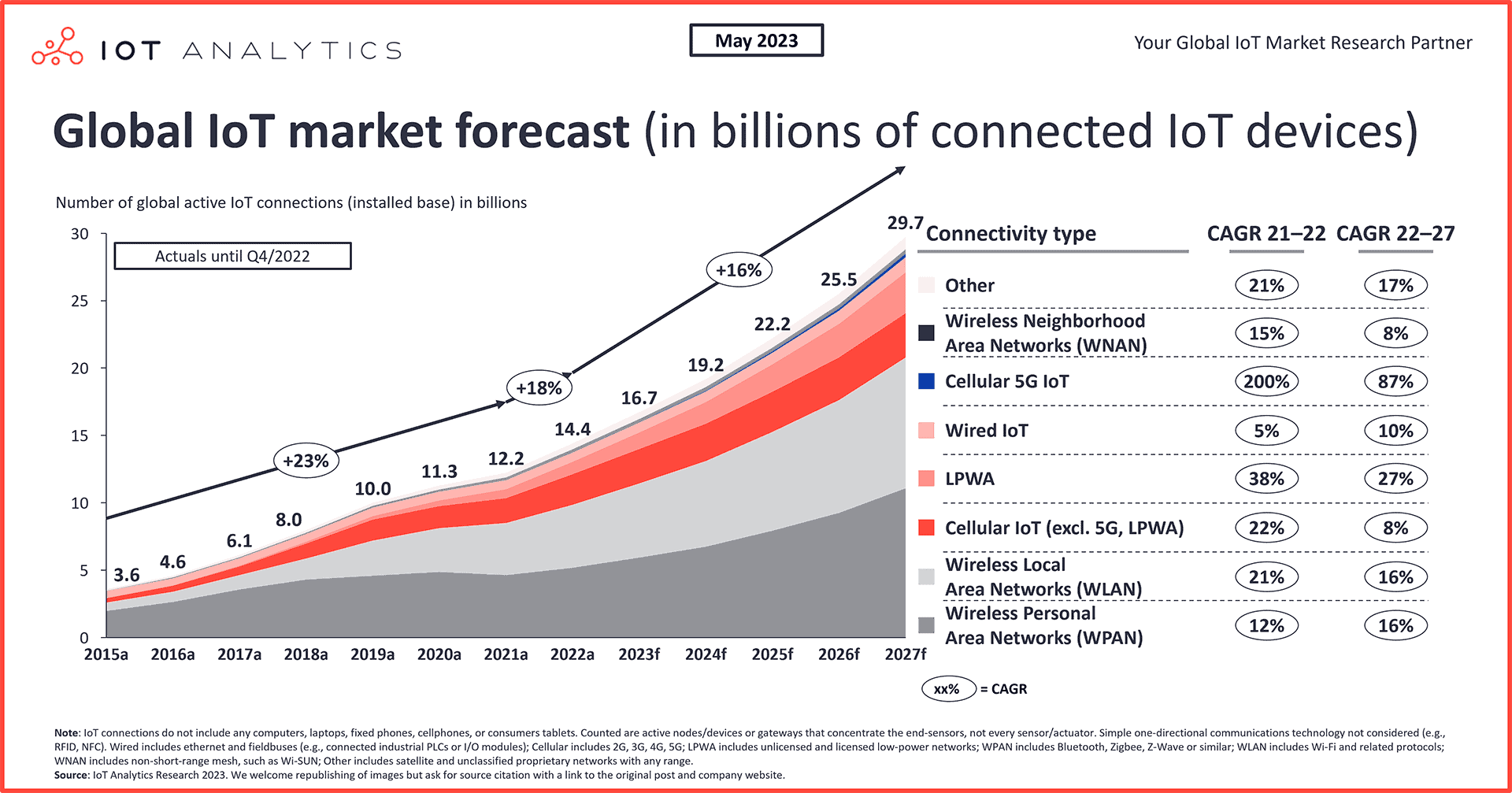
- Over 80% of enterprises are either already using or planning to use IoT solutions.
- About 65% of companies that have adopted IoT technology have seen a significant increase in their overall productivity.
- Small and medium enterprises are also getting in on the act, with a 30% adoption rate of IoT solutions.
- The manufacturing industry has a 70% adoption rate of IoT technology, making it one of the leading sectors.
- More than 45% of logistics companies now use IoT devices to track shipments and monitor assets.
- In the energy sector, 75% of utility companies are using smart grids and IoT sensors.
- Roughly 60% of all consumer spending on the IoT is on home automation devices.
- The number of connected healthcare devices is projected to grow to over 1.6 billion by 2025.
- About 55% of cities worldwide are currently investing in smart city initiatives that leverage the IoT.
- The use of the agriculture industry has led to a 15% increase in crop yields for farmers who have implemented it.
- Around 70% of IT decision-makers believe that the IoT will be crucial for the success of their businesses in the next five years.
- Over 65% of all new cars sold globally are now equipped with some form of IoT connectivity.
- Approximately 40% of manufacturing companies are using IoT sensors for predictive maintenance.
- IoT in the public sector is projected to generate $29 billion in revenue by 2027.
- About 85% of companies that have adopted IoT solutions reported an increase in operational efficiency.
- Roughly 35% of companies in the retail sector are using IoT technology to track inventory and manage supply chains.
- 72% of companies see the IoT as a key enabler for digital transformation within their organization.
- The global adoption of IoT in smart homes has resulted in a 15% reduction in energy consumption in equipped households.
- Over 50% of all industrial robots are now connected to the IoT. This integration allows them to share data, coordinate tasks, and operate more efficiently on the factory floor.
- About 75% of companies in the oil and gas industry are using IoT sensors to monitor pipelines and drilling equipment.
| Manufacturing | 70% |
| Logistics & Transportation |
45% |
|
Utilities |
75% |
| Healthcare |
60% |
|
Retail |
35% |
IoT Challenges and Security
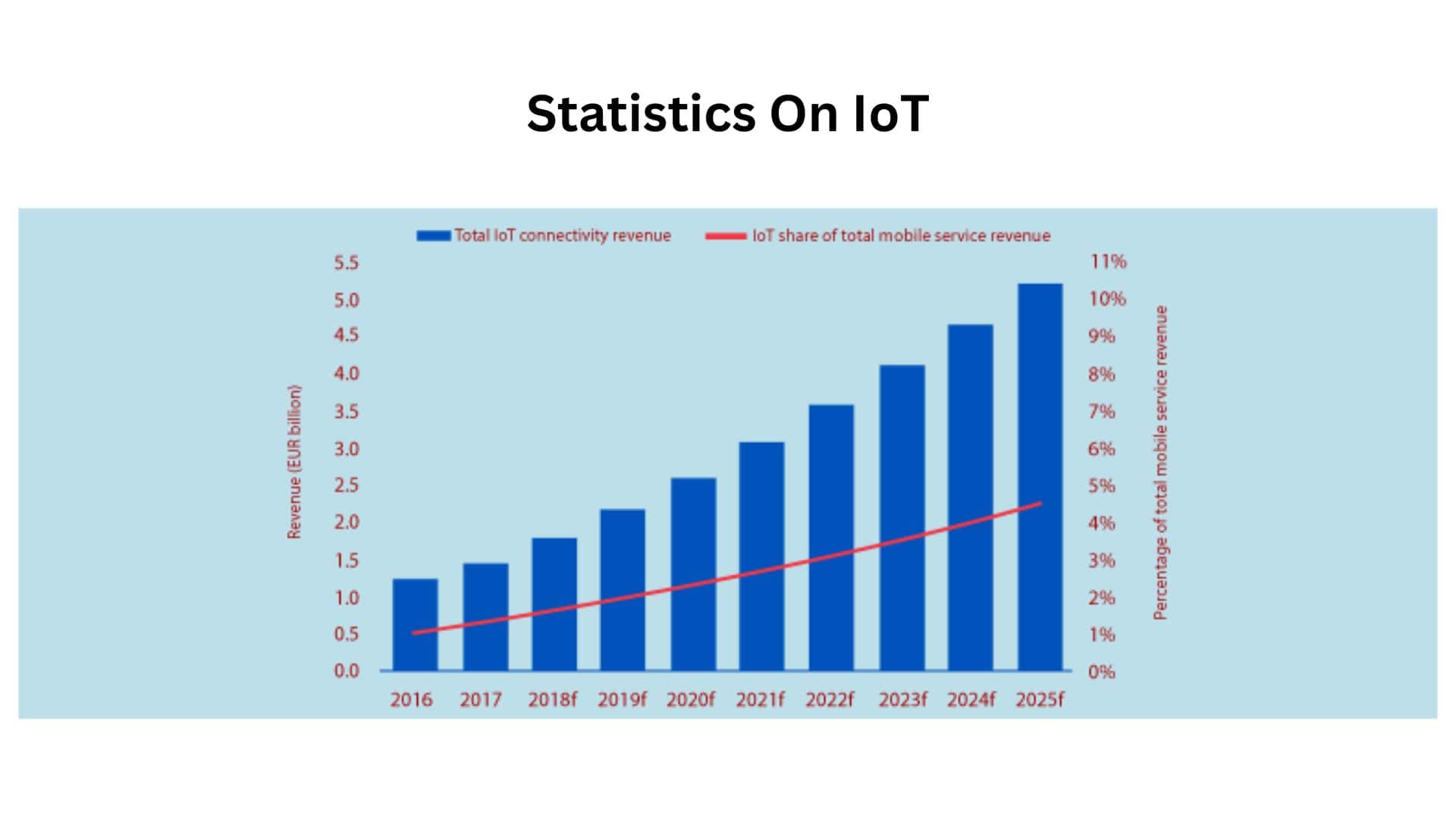
- 98% of IoT device traffic is encrypted, meaning that sensitive data can be easily intercepted.
- Over 50% of organizations have reported a serious IoT security breach in the last two years.
- Approximately 40% of all cyberattacks target IoT devices. This makes connected devices a primary entry point for hackers to gain access to networks.
- By 2027, the cost of IoT security breaches is projected to reach $18 billion.
- 54% of companies consider data privacy to be the biggest challenge for IoT implementation.
- A major study found that over 70% of companies that have adopted the IoT still rely on default passwords for some of their devices.
- Only 10% of organizations have a fully implemented IoT security strategy in place.
- 49% of healthcare organizations have experienced an IoT security breach.
- The average cost of an IoT data breach is estimated to be over $3.86 million.
- 60% of consumers are concerned about the security of their smart home devices.
- A study on industrial IoT found that 76% of attacks are aimed at control systems and operational technology.
- Only 25% of organizations have a dedicated IoT security budget.
- The global cost of cybercrime is expected to reach $10.5 trillion annually by 2025, with a significant portion of this being related to IoT vulnerabilities.
- 55% of companies cite a lack of in-house skills as a major barrier to IoT.
- About 60% of security professionals believe that the IoT is the most vulnerable point in their network.
- The average time it takes to identify an ad containing an IoT breach is 287 days.
- 30% of all IoT devices are expected to be equipped with some form of AI to handle security threats by 2025.
- A survey found that 45% of security leaders believe that IoT devices are not being properly patched for vulnerabilities.
- The number of DDoS attacks originating from IoT botnets has increased by 200% in the last year alone.
- Over 65% of all smart home devices are running on outdated firmware. This is a critical security flaw that can be easily exploited by cybercriminals to gain unauthorized access to a home network.
| Security and Privacy | 98% of IoT traffic is unencrypted |
| Vulnerabilities | 40% of cyberattacks target IoT devices |
| Cost of Breaches | $18 billion projected cost of breaches by 2027 |
| Skills Gap | 55% of companies lack in-house skills |
| Outdated Firmware | 65% of smart home devices are outdated |
IoT Benefits and Impact
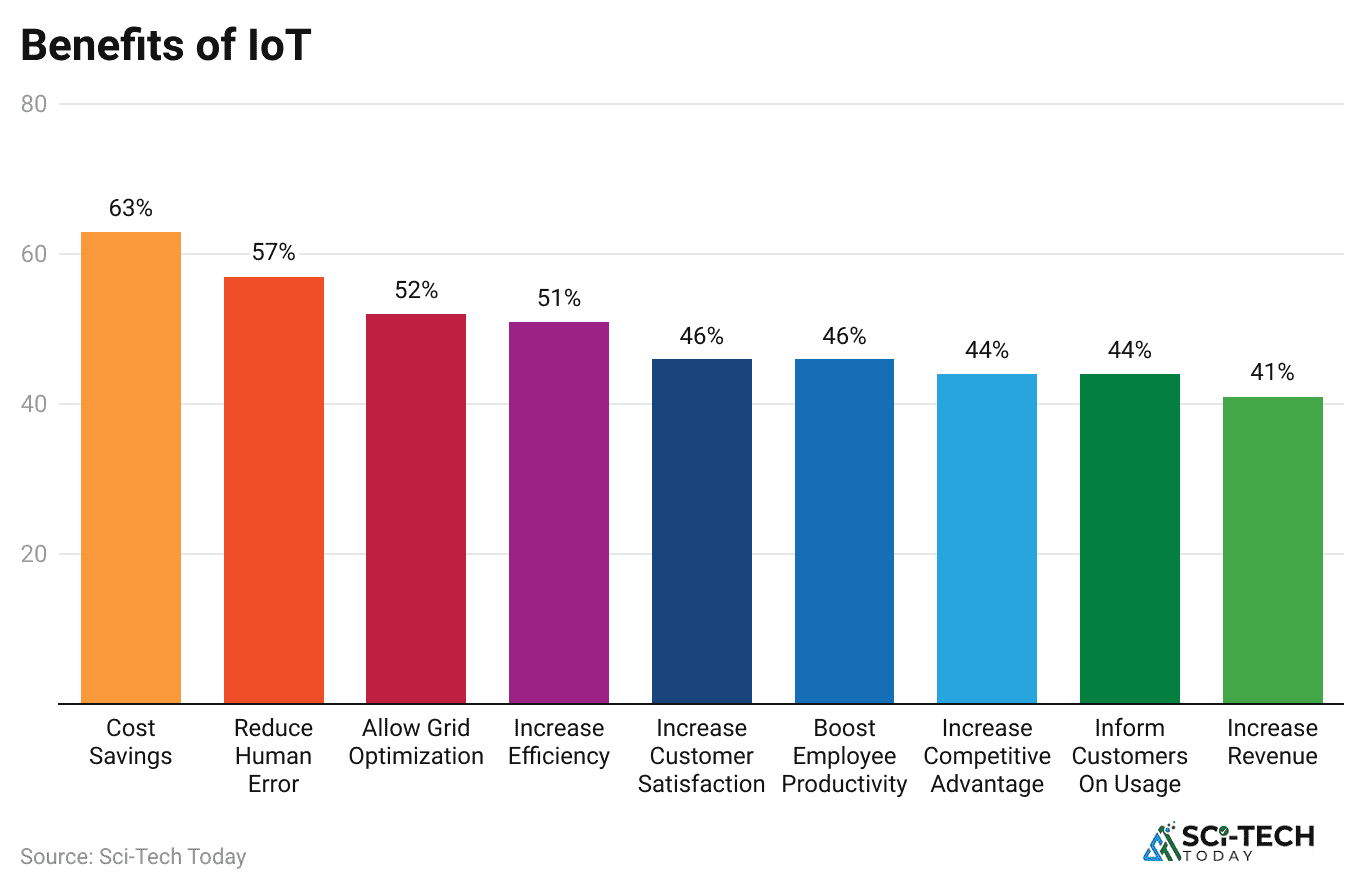
- Businesses that have adopted the IoT have seen an average 83% increase in operational efficiency.
- The use of smart meters in homes and buildings has led to a 15% reduction in energy consumption.
- The implementation of IoT solutions in supply chains has led to a 20% reduction in logistical costs.
- The use of smart sensors in agriculture has led to a 10% decrease in water usage for irrigation.
- For smart cities, the IoT has helped reduce traffic congestion by up to 20%.
- In the healthcare sector, the IoT has reduced hospital re-admission rates by 30% for patients with chronic illness.
- The use of predictive maintenance with IoT sensors in manufacturing has led to a 25% reduction in unplanned downtime.
- Smart street lighting, a key component of smart cities, has led to a 30% reduction in electricity consumption.
- Approximately 40% of companies that have adopted the IoT have reported improved business agility.
- The use of IoT in warehouses has led to a 15% improvement in order fulfillment speed.
- Public safety initiatives that use IoT technology, such as gunshot detection sensors, have led to a 25% reduction in violent crime rates in some cities.
- About 35% of businesses have created new revenue streams as a direct result of their IoT initiatives.
- The use of IoT devices in commercial buildings has resulted in a 20% reduction in energy costs.
- The adoption of wearable technology in the workplace has led to a 20% increase in worker safety.
- The implementation of IoT in the logistics sector has led to a 10% decrease in the time it takes to deliver goods.
- In the retail sector, companies that use IoT Sensors for in-store analytics have seen a 15% increase in sales.
- The use of IoT in the oil and gas industry has led to a 20% reduction in maintenance costs.
- The healthcare IoT market is expected to generate over $30 billion in savings annually by 2030.
- About 85% of companies that have implemented the IoT feel that it has significantly improved their competitive position in the market.
- The use of smart traffic solutions powered by the IoT can reduce the average commuter’s daily travel time by 30 minutes.
| Operational Efficiency | 83% average increase in efficiency |
| Cost Savings | 15% reduction in household energy consumption |
| Safety and Security | 25% reduction in crime rates with smart sensors |
| Business Agility | 40% of companies report improved agility |
| New Revenue Streams | 35% of businesses created new revenue |
IoT Market Size
- The Global Internet of Things (IoT) Market is expected to reach USD 3,454.2 billion by 2033, rising from USD 492.7 billion in 2023, at a CAGR of 21.5% from 2024 to 2033.
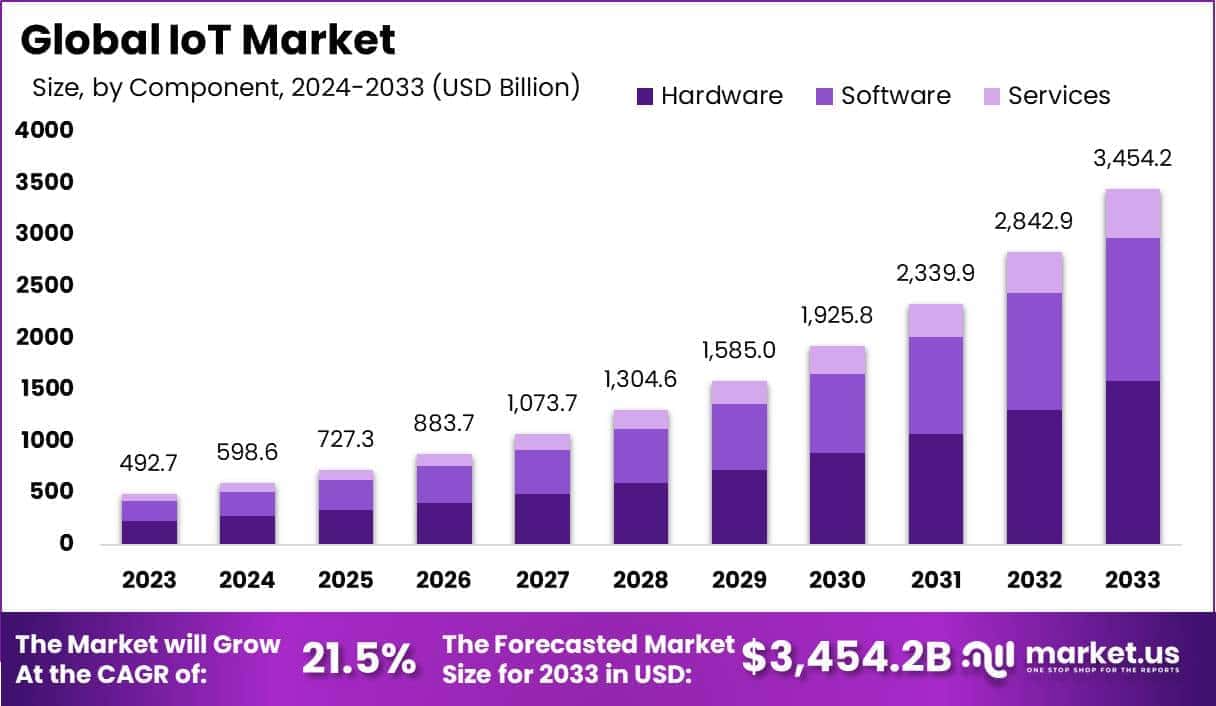
- A Zebra study projected that smart asset tracking solutions using IoT and RFID would replace spreadsheet-based methods after 2022.
- Microsoft reported that 85% of companies are already involved in at least one Industrial IoT project.
- Cisco estimated that about 500 billion devices will be connected to the internet by 2030.
- IoT Analytics forecasted that IoT devices will exceed 27 billion by 2025, while there are already 16.3 billion IoT connections globally.
- China and the United States together account for 40% of these connections.
- Home security and monitoring systems lead with 10.9 billion connections, followed by smart meters and home appliances with about 1 billion connections each.
- In 2023, the hardware segment dominated the IoT market with a share of 43.5%.
- The industrial users segment captured 42.1% of the market in 2023.
- Consumer electronics accounted for 23.3% of the market in 2023.
- North America led the IoT market in 2023 with a share of 37.0%.
- IoT connections are expected to bring in around USD 18.7 billion in revenue.
- IoT data and analytics services are projected to reach USD 76.5 billion in revenue this year.
- IoT device and application platform services are expected to surpass USD 100 billion in revenue.
- IoT network services are estimated to generate around USD 1.10 billion in revenue.
- Professional IoT services are projected to have a market opportunity worth USD 83.1 billion.
- IoT security services are expected to create a revenue opportunity of USD 10.5 billion, reflecting rising concerns over data protection.
- Annual shipments of IoT antennas are projected to reach 6.9 billion by 2024, showing strong demand for wireless connectivity.
Devices and Connections
- By 2030, the internet is expected to connect approximately 500 billion devices, according to Cisco.
- IoT Analytics predicts that the number of IoT devices will exceed 27 billion by 2025.
- Currently, there are approximately 16.3 billion IoT connections globally.
- China and the US together account for 40% of these global connections.
- 9 billion of these connections are attributed to home security and monitoring systems.
- Both smart meters and home appliances account for around 1 billion connections.
- IoT antenna shipments are anticipated to reach approximately 6.9 billion annually by 2024.
Revenue and Spending
- IoT connections are expected to contribute approximately US$18.7 billion in revenue.
- IoT data and analytics services are projected to generate around US$76.5 billion in revenue.
- Revenue from IoT device and application platform services is forecasted to surpass the US$100 billion mark.
- IoT network services specializing in IoT are expected to have a market opportunity worth approximately US$83.1 billion.
- IoT security services are projected to create a revenue opportunity of around US$10.5 billion.
- 85% of companies are currently engaged in at least one IIoT use case project.
Developments
- IBM acquired HashiCorp for approximately $6.4 billion.
- Qualcomm introduced new processors in April 2023.
- Cisco introduced enhancements to its IoT portfolio in February 2023.
- Renesas Electronics acquired Sequans Communications for $249 million in August 2023.
| Market Size (2023) | $492.7 Billion |
| Market Size (2033) | Expected to reach $3,454.2 billion |
| CAGR (2024 to 2033) | 21.5% |
| Connected Devices (2025) | 27 Billion (IoT Analytics) |
| Connected Devices (2030) | Approximately 500 Billion (Cisco) |
| Current IoT connections | 16.3 billion globally |
| Connections Share (China and US) | 40% of global connections |
| Hardware Segment Share (2023) | 43.5% |
| Industrial Users Share (2023) | 42.1% |
| Consumer Electronics Share (2023) | 23.3% |
| North America Market Share (2023) | 37.0% |
| North America Market Value (2023) | $ 182.3 billion |
| Companies with IIoT Projects | 85% of companies are engaged in at least one project |
| Home Security Connections | 10.9 billion |
| IoT Antenna Shipments (2024) | Approximately 6.9 billion annually |
| IBM-HashiCorp Acquisition | $6.4 billion |
| Renesas-Sequences Acquisition | $249 million |
IoT Investments
- Global spending on the IoT is projected to grow at a compound annual growth rate (CAGR) of 11.3% from 2023 to 2028.
- Venture capital funding for IoT startups has reached over $2 billion in the last year alone.
- The largest investment in a single IoT company was $32 billion by Softbank to acquire ARM Holdings in 2016.
- In 2023, the total spending on IoT platforms reached approximately $10 billion.
- A recent study found that 45% of all corporate investment in the IoT is directed towards software and analytics.
- The global spending on IoT security solutions is forecasted to grow at a CAGR of 20.4% from 2023 to 2028.
- The smart home market is expected to see over $120 billion in investment by 2025.
- Over 30% of all corporate mergers and acquisitions in the tech sector in the last three years have been related to the IoT.
- The manufacturing sector is expected to spend over $150 billion on the IoT by 2025.
- The automotive industry is projected to invest more than $60 billion in IoT by 2028.
- Over 60% of all IoT investment is currently focused on the enterprise sector rather than consumer applications.
- The global investment in smart city infrastructure is projected to reach $3.5 trillion by 2030.
- Over 70% of companies that have a formal IoT strategy have also increased their budget for it in the last year.
- The total number of private funding rounds for IoT startups has increased by 25% YOY.
- The healthcare sector is set to invest over $75 billion in the IoT by 2025.
- Approximately 55% of all IoT investments are going to companies in North America and Europe.
- The total spending on IoT in the logistics sector is projected to reach over $80 billion by 2027.
- The IoT security market is expected to grow from $10.5 billion in 2023 to over $40 billion by 2028.
- The number of patents filed for IoT technology has increased by 15% annually.
- The total investment in the IoT in the retail sector is projected to reach $12 billion by 2027.
| Venture Capital | $2 billion in VC funding in the last year |
| Mergers and Acquisitions | 30% of tech M&A is IoT-related |
| R&D and Patents | 15% annual increase in patent filings |
| Market Segments | $150 billion spent in manufacturing by 2025 |
| Geographic Focus | 55% of investment in North America and Europe |
Conclusion
Overall, these statistics give us a clear image of a tech that’s changing our day-to-day life. It is a force of immense economic power, driving efficiency, creating new opportunities, and fundamentally changing how we interact with the world around us.
While significant challenges, especially in security and privacy, still exist, the massive investments and widespread adoption indicate a collective belief in its transformative potential. As the number of connected devices continues to multiply at a higher rate, we can say the future of the Internet of Things is way brighter than we think. I hope you like this article. Thanks for staying up till the end.
FAQ.
(IoT) It is a vast network of physical objects, or “things,” that are embedded with sensors, software, and other technologies. These devices connect to and exchange data with other devices and systems over the internet. It is a system of interconnected computing devices, mechanical and digital machines, objects, animals, or people that are provided with unique identifiers (UIDs) and the ability to transfer data over a network without requiring human-to-human or human-to-computer interaction. The fundamental concept is to extend internet connectivity beyond traditional computers and mobile devices to a wide range of everyday objects.
The number of connected devices is constantly growing, but recent data shows a clear picture. As of late 2024, there were an estimated 18.8 billion connected Internet of Things devices globally, a significant increase from previous years. Looking ahead, this number is projected to grow to over 40 billion by 2030, showing a massive expansion of the connected ecosystem in a very short time. This growth is driven by the proliferation of smart home devices, industrial sensors, and connected vehicles.
A system consists of four primary components that work together to collect, process, and act on data. The first component is the devices or sensors, which gather data from their environment. The second is connectivity, which enables the data to be sent to a central location. The third is the data processing and analytics layer, typically a cloud-based application that analyzes the data. Finally, the fourth is the user interface or actionable insight, which presents the processed information to the user or triggers an automated action, such as adjusting a thermostat or sending a notification.
The benefits are widespread and impactful, from improving daily life to revolutionizing industries. One major benefit is increased efficiency, with businesses reporting up to an 83% increase in operational efficiency after adopting Internet of Things solutions. Another key benefit is cost reduction, as seen in smart homes that can save up to 15% on energy bills and manufacturers who reduce maintenance costs by up to 20% through predictive maintenance. The Internet of Things also enhances safety by enabling real-time monitoring of everything from factory machinery to public infrastructure.
Despite its many advantages, IoT faces significant challenges, with security and privacy being the most critical. A staggering 98% of Internet of Things device traffic is unencrypted, making it vulnerable to interception and hacking. Over 50% of organizations have reported a serious Internet of Things security breach, highlighting the real risks involved. Other major challenges include interoperability, as devices from different manufacturers often use incompatible protocols, and data management, due to the immense volume of data generated by billions of devices.
It is profoundly impacting a wide range of industries by creating new opportunities for efficiency, automation, and data-driven decision-making. In manufacturing, it enables smart factories with real-time monitoring and predictive maintenance. In healthcare, it allows for remote patient monitoring and more personalized care. In agriculture, it powers precision farming with smart sensors that monitor soil conditions. The Internet of Things is also a cornerstone of smart cities, where it optimizes everything from traffic flow to waste management and public safety.
The future of the Internet of Things is focused on making devices smarter, more secure, and more integrated into our daily lives. Key trends include the integration of AI and machine learning to enable more intelligent automation and predictive analytics. The widespread adoption of 5G networks will provide the low latency and high bandwidth needed for more complex Internet of Things applications, such as autonomous vehicles. Another major trend is the development of edge computing, which allows for data processing to happen closer to the devices, reducing latency and reliance on cloud services.

Rohan is a senior editor at Sci-Tech Today with extensive knowledge of digital marketing, SEO, and social media optimization (SMO). He is skilled at creating and editing detailed articles filled with accurate statistics that readers find valuable. As a senior editor, Rohan carefully reviews and quality-checks content from multiple writers before it is published. Additionally, he creates infographics to accompany the statistics, making the information easier to understand and more engaging for readers. Rohan's dedication ensures that Sci-Tech Today delivers high-quality and informative content to its audience.
